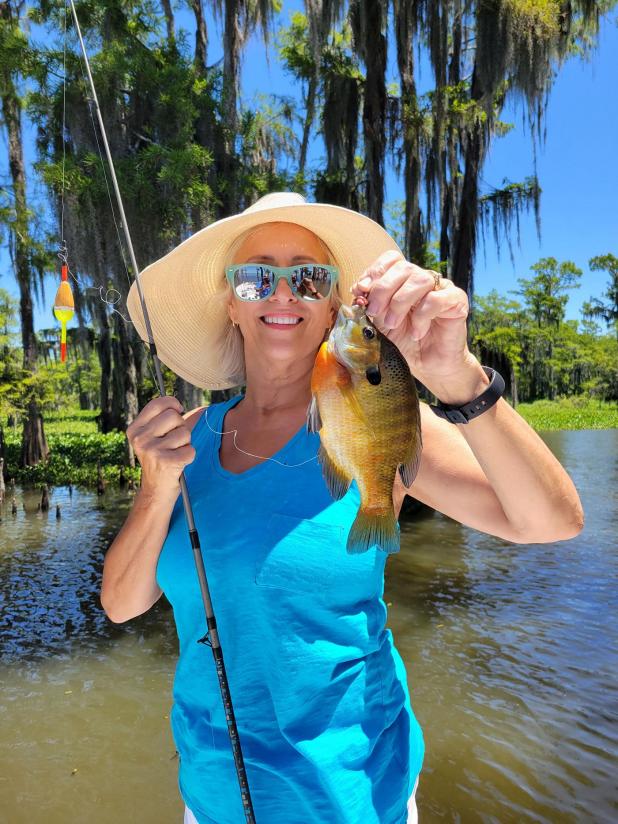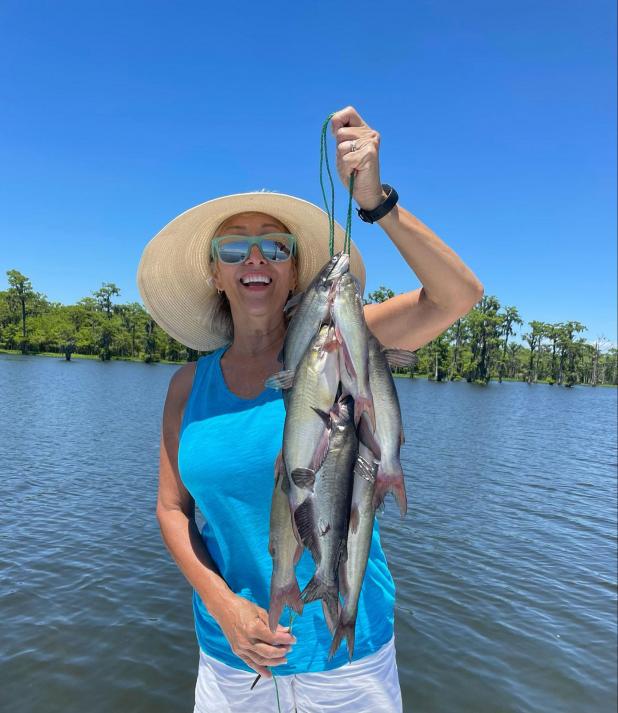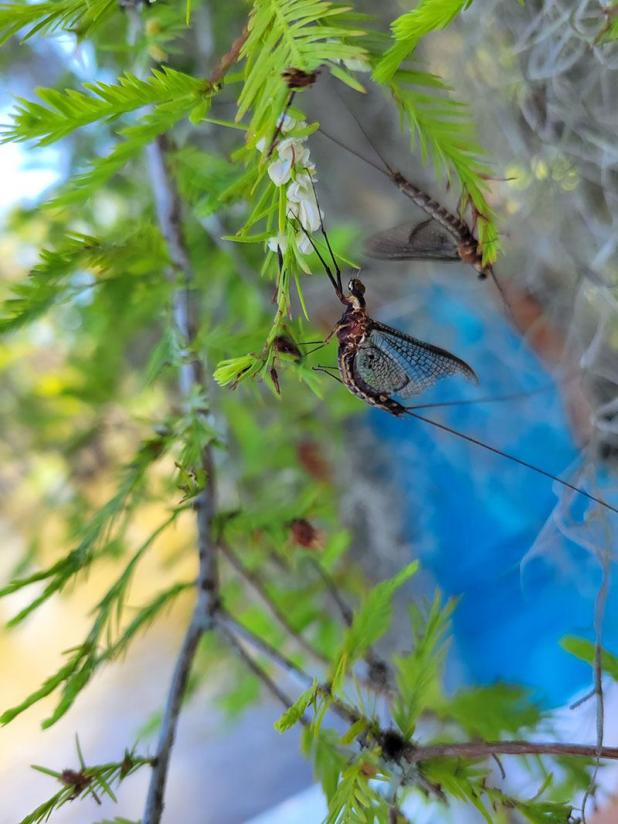
The author’s wife shows a good bluegill caught in the Atchafalaya Basin.
The Review/John Flores

The author's wife, this time with a stringer of catfish caught in the Basin.

A mayfly clings to a cypress tree and will eventually fall prey to a bird or fish.
John Flores: Mayfly hatch means it's time to go fishing
This past Saturday, during the long Memorial Day Weekend, the Atchafalaya Basin had a unique activity that takes place annually starting around this time of year. Underneath the canopy of cypress and tupelo trees, the water popped and swirled as multitudes of fish gorged themselves on mayflies.
Scientists estimate that mayflies have been around some 300 million years, and that there are over 3,000 different species of them worldwide. Since I can’t conceptually wrap my head around either of these numbers, I’ll stick to the one species of mayfly I do know something about – the local one in our surrounding swamps and marshes.
It seems to me, God in His infinite wisdom created mayflies to basically be food for other creatures, particularly birds and fish. Essentially, adult mayflies live for only a few hours to maybe a couple of days if they’re lucky. And, during what’s known as a mayfly “hatch,” there are thousands upon thousands of them clinging to everything and anything they come in contact with.
In town this can be a real nuisance as they are attracted to outside lights at night, where the next day literally piles of them lay dead in driveways and parking lots needing to be swept up. However, in the Atchafalaya Basin after a night of mating, they hang onto trees and Spanish moss dying, ultimately falling into the water below where the fish gobble them up.
My wife and I watched and took advantage of this while fishing last weekend. It didn’t matter that we were using worms. The bluegills and red-ear sunfish we were fishing for were in a feeding frenzy. Anything that hit the water was immediately swallowed up. And not just the bream were active; the channel catfish were, too.
A couple of the catfish had bellies that bulged so large, they looked almost deformed. After performing a little post cleaning necropsy to look at their stomach content, we found them stuffed chock-a-block with mayflies.
Mayflies start to hatch in late May and continue to off and on throughout the summer and sometimes on into early fall when the weather is warm. They’re a docile creature that doesn’t bite, sting, or even eat in their adult stage. During an evening swarm, females will be grabbed by a male and mated with. Afterwards, she immediately drops to the water to deposit her eggs.
It’s the time when female mayflies are also most vulnerable, as they lie flat on the surface of the water. Fly fishermen for generations have tied flies that resemble the mayfly and have tried to mimic this cycle of life while fishing, often with great success.
For the regular angler who dunks a worm or drowns a cricket, the mayfly hatch is just another one of those natural things he watches for each year. Like an alarm clock, they alert him that it’s time to go fishing.
During our Saturday trip, we watched a couple of boats using their troll motors to navigate slowly around every cypress tree they came to. They were having a big time catching sac-a-lait.
After landing a couple of pretty fish, one of the anglers said loud enough for us and everyone close to him to hear, “Nothing to see here folks – nothing to see here!”
Of course, it was too late. We saw plenty!
This week the Atchafalaya River stage at Morgan City will be somewhere around 4.5 feet and falling – perfect for bream fishing in the Basin and surrounding waters. Additionally, blue gills, red-ear sunfish (chinquapins) and long-ear sunfish are spawning right now.
When these conditions all come together at the same time your chances of filling an ice chest with panfish increases exponentially. This past Saturday, my spouse and I brought home 48 frying size panfish that included 8 channel catfish. It doesn’t get much better than that during a morning trip.
Bluegills and chinquapins don’t take a lot of fancy tackle. A small bobber, No. 6 perch hook, and split shot weight is all you need. For bait, worms and crickets are excellent, but when fish are feeding in a frenzy during and following a mayfly hatch, I’ve seen where a piece of corn will catch bream.
For those who like to use artificial bait, this past weekend I used a “poppa-chop” jig in an orange and chartreuse color to catch fish.
Though I didn’t try, I’m sure a 1/16th ounce H&H Pro Cajun Spin or 1/32nd ounce Johnson Beetle Spin would have done the trick as well.
With conditions like this all lined up to start the summer, there’s no better time to be fishing in the Atchafalaya Basin.
